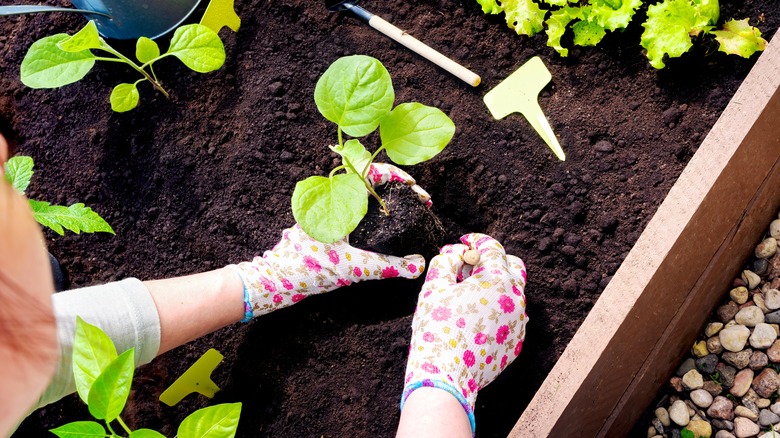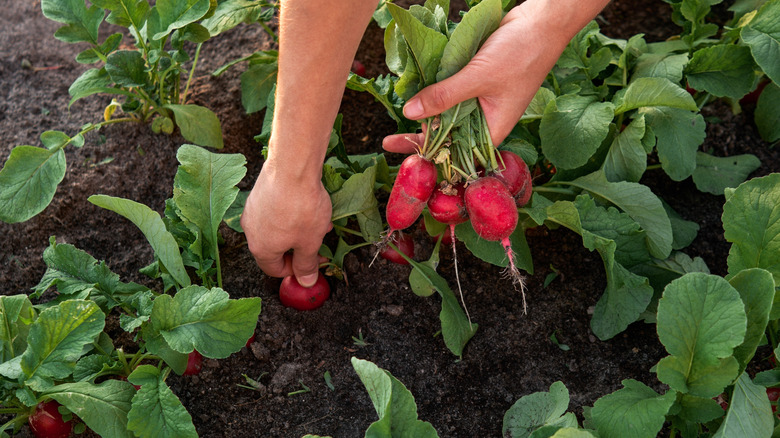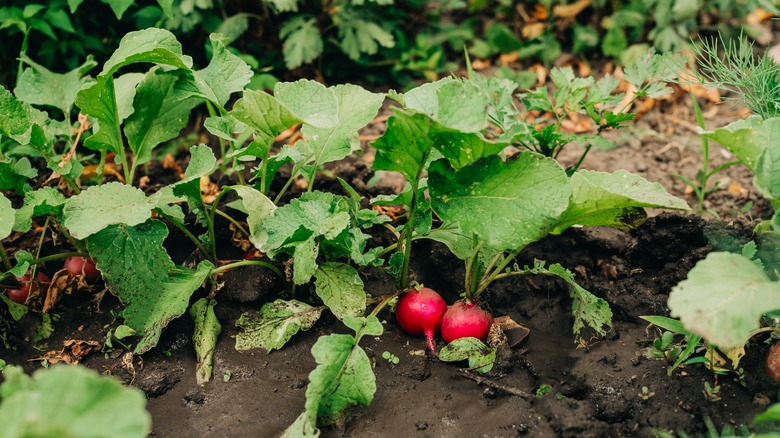The Fast-Growing Vegetable To Plant In Your Garden For An Early Harvest
Gardening teaches us many things — notably, an appreciation for delayed gratification. Unlike when you're shopping at the grocery store, fruits, vegetables, and flowers don't appear on a whim. It takes planning, planting, and tending to reap the rewards. And while your patience might test you, harvesting something you've spent a lot of effort growing is undoubtedly special. Although blooming, flowering, and fruiting are never truly instantaneous with gardening, a few types of plants produce their edible delicacies a little quicker than others.
If you're getting a late start in the season or want a vegetable that will pop up before the rest, you're not out of luck. Radishes are one of the fastest-growing vegetables that you'll absolutely love growing, and they'll be sprouting and ready for harvest before you know it. They have a quicker yield time than other fruits and vegetables — which can sometimes take several months to fully mature — and help support other veggies in your garden, too. This makes radishes an ideal addition, among other reasons. Learn more about radish care, yield time, and tips for growing these crunchy delights at home.
Why radishes make a great garden addition
If you're an admittedly impatient gardener or craving a fast-developing plant, radishes won't have you waiting around. Some may be ready for picking as early as three weeks after planting. Their maturation time ranges anywhere from 21 to 45 days. It can be difficult to tell if they're ready for harvest, but longer leaves (around 6 to 8 inches tall) are a good sign. You can also pluck just one to get an idea of how the others are coming along. Depending on when they're planted, you can typically harvest radishes in nearly every month of the year, save for March and April.
But before you can dig up anything, you'll want to set the right conditions. Radishes are tasty, cold-hardy vegetables to plant in your garden and are better suited for cooler weather rather than super-hot climates. They prefer a looser soil that drains well with a slightly acidic pH. Although well-draining soil is important, radishes like a lot of water and can suffer from a lack of it. Full sun is preferable, but a location that gets shade during the hottest part of the day is ideal. Stay on top of weeding and thinning so each plant has the best chance of fully maturing.
Tips for growing radishes
For the best results, one great tip to consider while growing radishes is companion planting. Choosing the right plants to surround your radishes can help with growth and pest control. A fabulous partner for your rows of radish beds are alliums like spring onions, garlic, or chives. They'll help keep critters interested in chewing on your crop at bay. Thanks to their quick maturation timeframe, radishes are also quite helpful. There are so many benefits of planting radishes next to your carrots in the garden, along with other similar vegetables, because their quick-growing leaves can offer protection from harsh sun and pests to plants that mature at a slower rate.
It's a good idea to add organic compost to the soil to boost the health and growth of your radishes. While that can be beneficial, avoiding any matter with manure or too much nitrogen is important. This will hinder the plants and can render some of your crops inedible. Prior to planting, if you find your soil is a little too hard, you can lightly till it to make the ground more comfortable for harboring your growing radishes.


